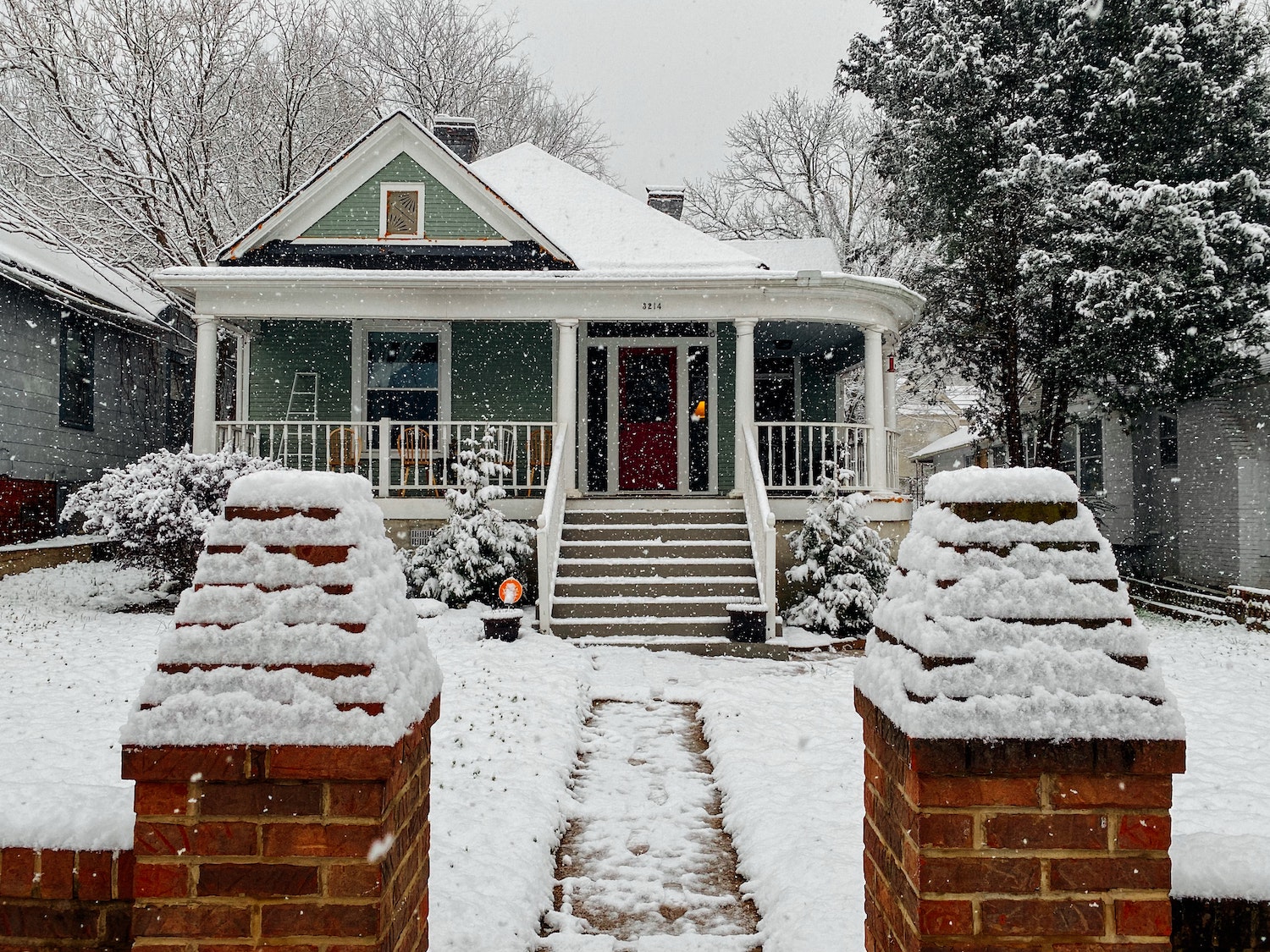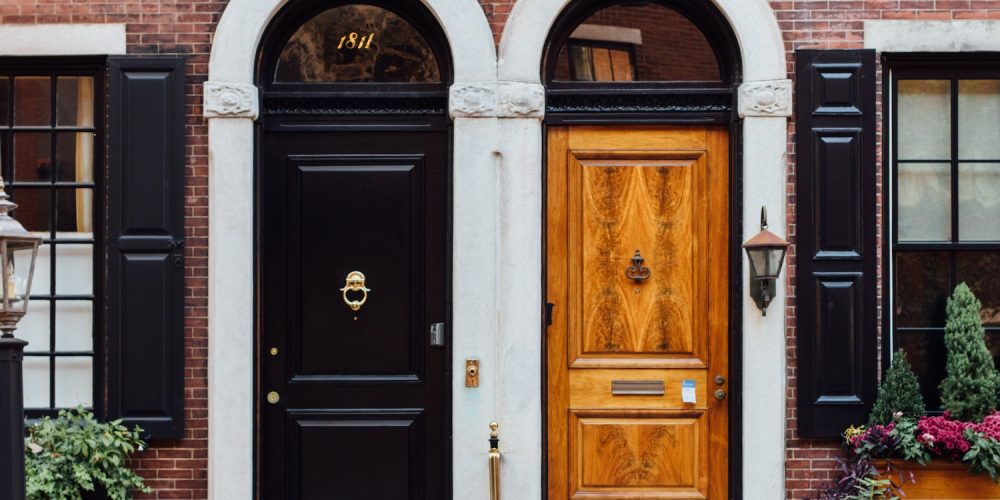Is Your Exterior Door Designed to Withstand The Unpredictable Cold Weather in Canada?
In cold winter, finding the best exterior doors for your home or business is essential. Replacing your exterior door can save you money on your energy bills and increase your home’s value. This article will outline the best exterior doors for cold weather in Canada and how they are the perfect addition to any home and will adequately seal to keep the heat in and the cold out.
Exterior Door Materials That Best Hold Up To Cold Canadian Winters
\The design of your exterior door is essential for many reasons, including curb appeal. And while front doors should be aesthetically pleasing, they must be energy efficient. Wood, steel, vinyl, and fiberglass are the most common materials for exterior doors. Below, we outline the options for you to compare the pros and cons.
Different exterior door materials provide different levels of warmth and protection. For example, wood has poor thermal insulating properties and requires regular maintenance. And it’s prone to cracking in moist weather conditions.
However, some doors are made to withstand the harsh winters. For instance, steel and fiberglass are the best materials for a door that holds up to a cold Canadian winter, but others, like vinyl doors may be more budget-friendly and will also do the trick.
Read on to find out what the best door materials are and why they are the best for your Canadian home:
Vinyl Exterior Doors
Vinyl doors are made with a vinyl finish or cladding. They typically feature an exterior of vinyl combined with a solid wood interior to provide strength and durability. Vinyl is a high-quality, popular choice for doorframes. Vinyl doors are popular for french doors or sliding doors, especially in homes with a patio.
Vinyl is an elegant solution to many homeowners’ door needs. Not only does it preserve the feel of a wood door, but it requires less maintenance than a wooden door.
Fabricated wood doors can be challenging to maintain and pricey for the warranty, but vinyl doors provide the same aesthetics at a fraction of the cost. Vinyl doors are easier to clean and have minimal risk of deteriorating. Once you invest in a quality vinyl door, you will enjoy its benefits for years!
If you want to keep your wood doors, a vinyl storm door can protect your expensive wooden doors from daily wear and tear by shielding them from the elements.
Vinyl doors have their pros and cons. They’re energy-efficient, but vinyl tends to expand and contract with heat and cold. Vinyl can be damaged by the elements and is susceptible to fading. Vinyl frames offer the most cost-effective, low-maintenance, and energy-efficient option. They keep heat from coming in during the summer and out during winter.
Fibreglass Exterior Doors
Fibreglass doors can be made to look exactly like a traditional wooden door. They are also more durable and don’t warp due to environmental exposure. Fiberglass-based doors are a good choice if you’re looking for something that won’t show dents so easily and can withstand abuse.
Fibreglass doors don’t have insulation properties, so an insulated core is embedded between two fiberglass walls.
The typical insulation of a steel or fiberglass-clad entry door is R-5 to R-6, without a window. On the downside, fiberglass doors will tend to be more expensive than some solid-core wooden doors, making them more difficult to trim.
Steel Exterior Doors
Steel doors are often considered good, solid choices due to their durability and sturdiness. The result is a door that can stand the test of time and provide you with ultimate peace of mind. Steel is an excellent choice if you’re worried about security because these doors keep your home intact under the harshest conditions.
Steel doors are popular for home entrances because they provide additional security against burglars or intruders. Steel doors can come with an insulation foam core that deters break-ins and intrusion. They also offer protection and shelter from strong winds. One downside is that steel doors are prone to dents and can be challenging to repair.
Steel doors can also be a bit problematic because they often don’t have a thermal break. A thermal break is created by placing a low-conductivity material between the door’s panels, such as foam or argon gas. The gap is a barrier that reduces heat conduction through the door’s metal framing. When the weather is hot, heat seeps in through these doors, and when it’s cold outside your home, the door lets cold air inside.
Factors to Consider When Choosing An Exterior Door
Canadians know winters can be harsh, often bringing dreary grey skies, snow, ice, and brutal cold waves. The door you choose can influence your home’s temperature, privacy, and security. Make sure you choose a door that reflects what’s important to you!

When buying a door for your home, there are a few things to consider: the materials, weatherproofing, storm doors, and heat. Incorrectly installed doors can lead to a slew of problems:
- Water leakage
- Potential dry rot and mold by the window
- Even letting in the cold (and heat)
Here are some reasons why you should install a quality exterior door:
Insulation & Energy Efficiency
ENERGY STAR labeled doors can help you make your home as efficient as possible. The sticker shows that the door has been lab tested and is certified to be energy efficient.
One of the best ways to save energy is by using a door with excellent thermal insulation properties. The R-value of a door provides a measure of its insulation properties. The larger the number, the more energy efficient the door will be.
The R-value for the door only considers insulation but does not consider that glass cutouts may negatively affect the insulation. Also, weatherstripping with the door’s design may reduce drafts created by air moving through the frame.
If sidelights or glass panes are inserted, they will be double-paned and air-filled. This clears up heat loss from the glass area of the exterior door.
The R-value of a fiberglass or steel door without any insulation will be between R-5 and R-6. On the other hand, a wood door has an R-value of between 1 and 2. Doors with high-density foam cores have levels of insulation that different types of doors can’t match.
Weatherstripping
Weatherstripping is one of the most critical features of any door. It seals as tightly as the magnetic seals on a fridge door.
The weatherstripping creates a seal around the door, preventing cold air from escaping through the seams. If there is insufficient or low-quality weatherstripping on a door, you will experience drafts, and your door will be less energy efficient.
Weatherproofing
Weatherproofing strips run along the edges of the door. They help keep cold air out when the door is closed and are very important in our cold climate here in Ontario.
Adjustable Threshol
Adjustable door thresholds can improve energy efficiency and therefore lower your bills by helping to make a tight seal on the door frame.
An adjustable threshold will also compensate for when the bottom of the door is uneven and keeps weather and pests out.
Moisture Repellant
Frame manufacturers rarely offer a 100% waterproof guarantee because of factors like building location, the position of the frame, or even architectural aesthetics.
Steel, fiberglass, and vinyl frames are primarily known for being water resistant if they are installed correctly with suitable materials.
Window Glazing
If you want an exterior door with a window, window glazing is critical to its energy efficiency.
Single-pane or single-glaze windows are known to be the least energy efficient because they allow heat to escape and cold air in. They are often seen in older homes with original windows and doors.
Double-pane or double-glazed windows have two glass layers with a space in between. Usually, there is argon gas in the space between the panes, which is used to insulate.
Choosing The Right Exterior Door For Your Home
When you need to replace windows or buy a new door, you must know you are making the right choice for your home.
Contact our skilled team at Energy Kingston Exteriors to schedule a free in-home consultation with one of our experienced door professionals
Call us and find out what type of door is right for your needs. Our experts can help you decide what would work best from a selection of available doors. Our company is committed to high-quality work and installing your doors with care.


